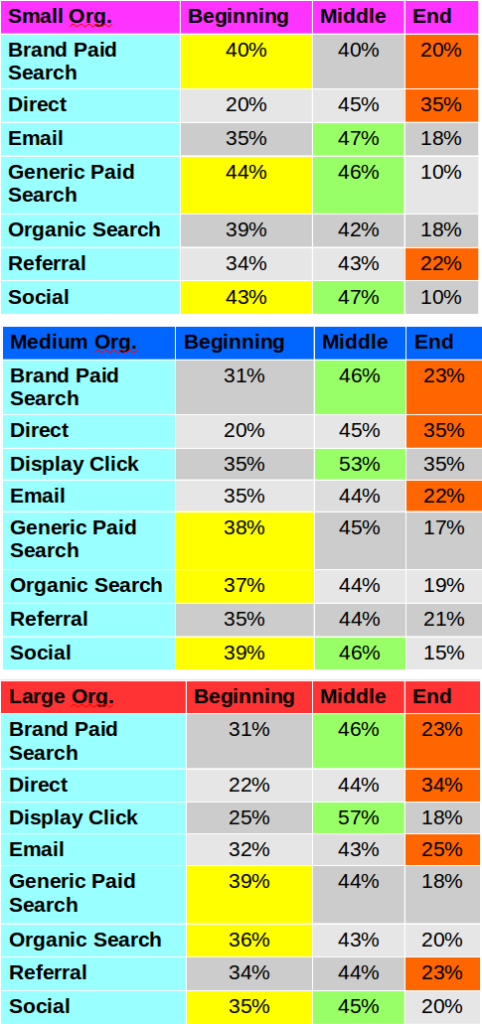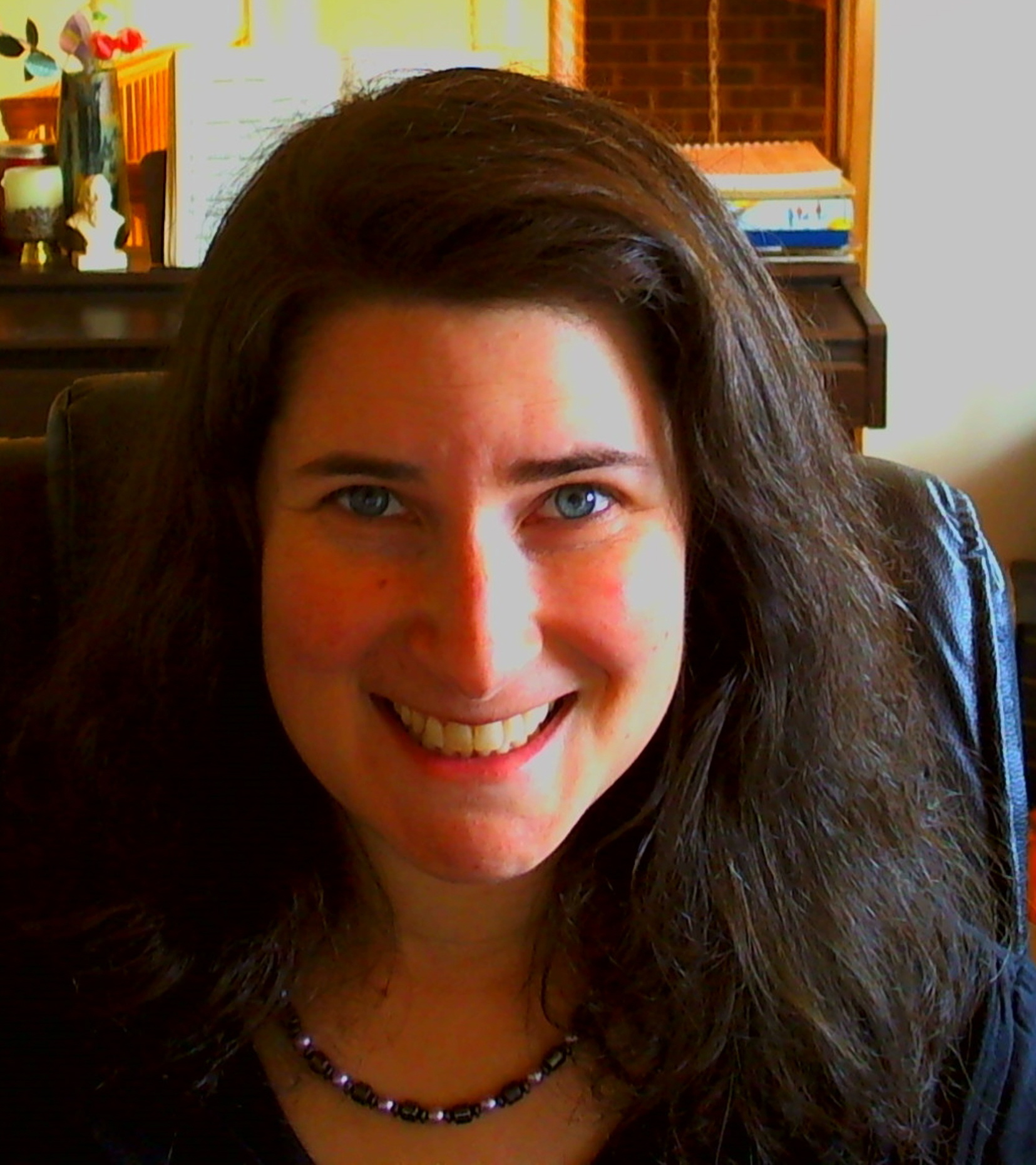I came across an article, The Customer Journey to Online Purchase, which had me get my geek on. A report was created to capture the benefits of different channels during a customer’s purchase process. The research was conducted in several countries with a breakdown of industry and size of organization. I decided to put together tables for the Arts & Entertainment industry based on size of organization. You can play around with the data at the website, but I basically took the work out of figuring which channels are best during the purchase decision via these tables.
Here is a little bit about the report taken directly from the article:
About the Report
This report includes transactional data collected from 42 thousand Google Analytics properties with Ecommerce tracking enabled, across 8 countries, over an 11 month time period (purchase paths that concluded on 45 randomly selected dates from October 2013 – September 2014). The report includes data only from properties whose owners have authorized data sharing with Google Analytics and third parties. Google Analytics views that receive mobile apps data were excluded from the data pull. Views were also filtered to exclude zero ecommerce transactions and purchase paths shorter than two steps. Purchase paths are based on interactions with a single Ecommerce advertiser (i.e., ad clicks and website visits that ultimately led to a purchase from that advertiser). All purchase path data is derived from the Multi-Channel Funnels reports. Channels are defined using Google Analytics channel groupings (excluding “Other Advertising”) and brand/generic categories.
Data source detail: N = US: 33 million Ecommerce transactions (18 thousand property views); UK: 189M (8K); Germany: 3M (3K); France: 2M (5K); Brazil: 2M (2K); Japan: 7M (2K); Canada: 2M (1K). Australia: 2M (3K).
The tables for the U.S., Arts & Entertainment Industry:
Here are some points that I found to be interesting:
- Using social media to get attention in the beginning rates highly for all types of organizations.
- For smaller organizations, it looks like paying for searches might be needed.
- Social media still is good for the middle of the decision to purchase cycle for all sizes of business.
- Small organizations can use email during the middle of the decision to purchase cycle to make a difference.
- Display Clicks are better for medium and large organizations during the middle of the cycle.
- At the end of the online decision to purchase cycle, what seals the deal, referrals rates high for all types of organizations.
- Brand paid search, direct marketing and email also serve to help seal the deal of purchase.
In summary, it looks like using social media to start your online marketing is a good way to go; paying for a few links and searches tends to get people’s attention in the middle of a purchase cycle; and to seal the deal, the more personal and direct channels such as referral, emails and direct marketing will do the trick.
To me this points out a cycle that forms a relationship with people. Hello, I am here via social media; don’t forget about me reminders in the middle; and then following up and following through with more personal relationship building at the finish line.
So even online marketing would benefit going the audience development route. Keep building those relationships online, and you will build your audiences!
Cheers to happy and loyal audiences,
Shoshana
Shoshana Fanizza
Chief Audience Builder, ADS
DIY Education is available!





